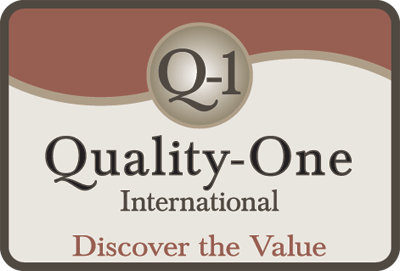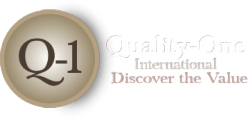ISO 13485 Consulting
– Guidance and Direction –
⇓ Introduction to ISO 13485 Consulting
⇓ Benefits of ISO 13485 Consulting

Introduction to ISO 13485:2016 Consulting
Maintaining high quality standards in any industry, organization or product is always extremely important. When you are manufacturing medical devices, it becomes even more important. Organizations that manufacture medical devices must develop and maintain an extremely robust quality management system. The ISO 13485 standard requirements are the foundation upon which to build a robust quality management system. It is vital that all of the customer and regulatory requirements be met and monitored throughout the planning, design, manufacturing and delivery process. There are multiple examples of the Cost of Quality (COQ). All one needs do is turn on any of the major networks to hear about potentially costly recalls and litigation regarding medical devices. Through implementation of an ISO 13485:2016 compliant Quality Management System will enable your organization to identify risk relating to possible non-conformances and reduce or prevent costly incidents. Product non-conformances with medical devices could literally become a matter of life and death. Establishing a robust ISO 13485:2016 compliant Quality Management System is a powerful way to demonstrate your organization’s commitment to product quality. This may also enhance your public image, increase your brand equity and improve your market share. Implementing any new process or system requires commitment. Commitment of resources, time and at times capital investments. Developing an ISO 13485 compliant QMS is no different. With the ever-changing global marketplace of today, organizations are feeling the pressure of competition, the pressure to provide the most value and highest quality in their products. At Quality-One, we have highly qualified consultants with experience in multiple industries ready to help assist your organization to develop a robust plan for the implementation of an ISO 13485:2016 certified Quality Management System.
Benefits of ISO 13485:2016 Consulting
Expert guidance and planning for the development and implementation of an ISO 13485 compliant QMS, while charting a clear course towards certification will considerably reduce the time and expense involved. Quality-One will not only assist in planning but also provide expert guidance prior to and during the development of your QMS. The team of professional consultants at Quality-One will help your organization stay the course and achieve your quality system goals including ISO certification.
“We start by setting the course, we succeed by staying the course” – Carece Slaughter
The needs of every organization are unique. While some are seeking to improve their existing QMS and bring it to compliance with ISO 13485:2016 requirements, others are starting from scratch. Therefore, at Quality-One we customize our Consulting Services to your ISO 13485:2016 needs. Our highly trained and experienced subject matter experts will provide you expert guidance in developing and implementing your strategic plan for certification. Our consultants will also provide effective coaching of your teams and mentoring for your management staff throughout the development implementation and certification process.
Benefits of ISO 13485:2016 Consulting include:
- Reduced QMS development and implementation time
- Quicker path to ISO 13485:2016 certification
- Improved effectiveness and efficiency of the QMS processes
- Fulfillment of all legal and regulatory requirements based on your product’s classification
- Development of a continual improvement culture within your organization
At Quality-One our highly qualified and knowledgeable subject matter experts will utilize industry best practices while working with your implementation team. In addition, they shall provide guidance to your management staff through the entire process. This generally results in a significant improvement in the effectiveness of your quality management system and its ability to meet the organization’s objectives.
Methodology for ISO 13485:2016 Consulting
At Quality-One, our teams of experienced professional consultants employ an organized process for the development and implementation of your ISO 13485:2016 compliant quality management system. This proven approach is effective in determining the project scope, facilitating productive planning activities, assignment of responsibilities, and evaluation of the results. The result is an effective and efficient plan for QMS development and implementation targeted for first time compliance or registration to the ISO 13485:2016 requirements. Gaining compliance is accomplished through a defined series of planned phases:
- Executive and Management Overview / Planning
- Current QMS Gap Assessment and Planning
- Development of Processes and Documentation
- Training and Implementation
- Internal Audit and Management Review
- 3rd Party Registration Assessment
- Maintenance and Continual Improvement
The Quality-One Seven-Phase Approach:
1. Executive and Management Overview / Planning
- Planning
- Define Context of Organization
- Define Needs and Expectations of Interested Parties
- Define the Scope of the Quality Management System
- Define and Ensure Management Commitment to the QMS
- Define System Support and Operation Requirements
- Define High Level Processes and System Map
- Define High Level Project Plan
- Define High Level Risks to QMS System Success
- Define QMS Objectives and Targets
- Communication and Training Plan
- Define Internal and External Communication Plans
- Define Training Plans
- Executive and Management Overviews
- Executive and Management Overviews
- Requirements of the ISO 13485:2016 Standard
- Taking a Process Approach towards the QMS
- Description of the Organization’s Project Plan
2. Gap Assessment and Planning
- Gap Assessment
- Perform a Gap Assessment of current state versus future state of your QMS in regards to the ISO 13485:2016 requirements
- Utilize the QMS process map as a guide
- Perform Assessments with QMS owners and other stakeholders
- Document Results and Use Results as inputs into the QMS future development
- Planning
- Re-assess planning performed in Phase 1
- From QMS Gap Assessment Findings Revise / Update
- Project Plans
- Communications Plans
- Training Plans
3. Management System Development and Documentation
- QMS Policy Development
- Create Level 1 Policy Document
- Involve Leadership in Policy Development
- Include QMS Process Map
- Use as a guide in Policy Development
- Include QMS documents relative to the ISO 13485:2016 requirements
- Management System and Process Development
- Define Organizational Roles, Responsibilities, and Authorities
- Management / QMS Owners /etc.
- Determine Legal Requirements and other Requirements
- Determine QMS Initial Objectives and Develop Plans to achieve them
- Define Support Requirements
- Determine Resources required
- Evaluate required worker competence to support the QMS
- Establish Training Plans as required
- Define Organizational Roles, Responsibilities, and Authorities
-
-
- Establish plan to ensure adequate awareness and understanding of the QMS throughout all levels of the organization
-
- Create Environmental Management System processes using the process approach
- Operational Planning and Control Processes
- Identification of risk and effective tools to reduce risk of an incident
- Robust Change Management Process
- Emergency Preparedness and Response
- Define Performance Evaluation Requirements
- Monitoring, measurement, analysis and performance evaluation
- Internal Audits
- Management Reviews
- Define Improvement Requirements
- Incidents, Nonconformity and Corrective Actions reporting
- Continual Improvement
- Determine Document Control and Retention Requirements
- Review / Approvals / Document Nomenclature
- Review ISO 13485:2016 Requirements with appropriate parties
4. Implementation and Training
- Implementation
- Develop Implementation Plans
- Purpose: describes the implementation requirements for the defined process in order to support the QMS Requirements
- Scope: Define the Scope the QMS plan covers (processes / areas / etc.)
- Activity: Define required Activity Steps
- Identify Who is Involved and Who needs to be Involved
- Timing: Define Timing Requirements
- Deliverables: Define Plan Deliverables
- Responsibility: Define Responsibilities
- Other as appropriate
- Environmental Management System Training
- Develop Implementation Plans
-
-
- All Employee Training
-
- Use Communications Process developed in phase 1 to cover general requirements
- Communicate QMS plans and Objectives
- Risk Identification and Assessment Tools training
- Problem Solving and Root Cause Analysis (RCA) training
- Process Audit methodology and Auditor training
- Leadership / Process Owner / Manager / Internal Assessors
- High Level Processes (Procedures)
-
-
- Management Training
-
- Review Environmental Management System
- Review Management System Processes
- Review Roles, Responsibilities and Authorities
- Review Resource commitments for Support and Operation of the QMS
- Review Objectives and Plan for Achieving them
- Review Documentation Process
- Review legal and other requirements
-
-
- Functional Area Requirements
- As per Implementation Plans for those areas
- Other
- As appropriate for the unique needs of the organization
- Internal Auditor Training
- Current Auditors
- Functional Area Requirements
-
- Provide an ISO 13485:2016 Overview
- Process Auditing Methodology training
-
-
-
- New Auditors
-
-
- ISO 13485:2016 standard Overview
- Internal Auditing Basics
- Process Auditing Methodology
5. Internal Audit and Management Review
- Internal Audit
-
-
- Internal Audit procedure and plan
- Based on QMS Processes and Procedures
- Audits by Core and Support Functional Areas
- Internal Audits (Validate QMS Implementation)
- Define Who Will Perform Audits
- Define Audit Schedules
- Communicate Audit Schedules to Process Owners / Auditees
- Perform Audits and Initiate Corrective Actions as Required
- Produce Audit Reports for Management Review
-
- Management Review
-
-
- Plan Management Review Meeting
- Attain all process output and Analyze Data
- Summarize Analyzed Data for Review Input
- Results of Internal Audits
- Process Performance (Suitability, Adequacy and Effectiveness)
- Risks Identified and Improvement Opportunities
- Status of Corrective and Preventive Actions
- Follow-up Actions from previous Meetings
- Changes that could affect the QMS, and Recommendations for Improvements
- Prepare and Summarize Man. Review Output Decisions or Actions Required to
- Improve the Effectiveness of the QMS and its Processes
- Improve worker awareness and knowledge of Environmental Management System
- Foster a Continual Improvement Culture
-
6. System Compliance / 3rd Party Registration Assessment
-
-
- Close any open actions resulting from Internal Audits or Management Reviews
- Prepare Registrar Assessment Plan with Registrar / Select Guides (Process Owners)
- Schedule the Registrar Assessment and Communicate to Process Owners and Auditees
-
7. System Maintenance, Sustainability and Continual Improvement
-
-
- Summarize Continual Improvement Activities by Process and Align to
- Business Goals
- QMS Objectives
- QMS Planning Activities
- Measures of Effectiveness
- Continued Internal Assessment and Management Review to Assure Process and System Continual Improvement
- Summarize Continual Improvement Activities by Process and Align to
-
Learn More About ISO 13485:2016 Consulting
Quality-One offers Medical Device QMS Development through Consulting, Training and Project Support. Quality-One provides Knowledge, Guidance and Direction in QMS development activities, tailored to your unique wants, needs and desires. Let us help you Discover the Value of ISO 13485 Consulting, ISO 13485 Training or ISO 13485 Project Support.
